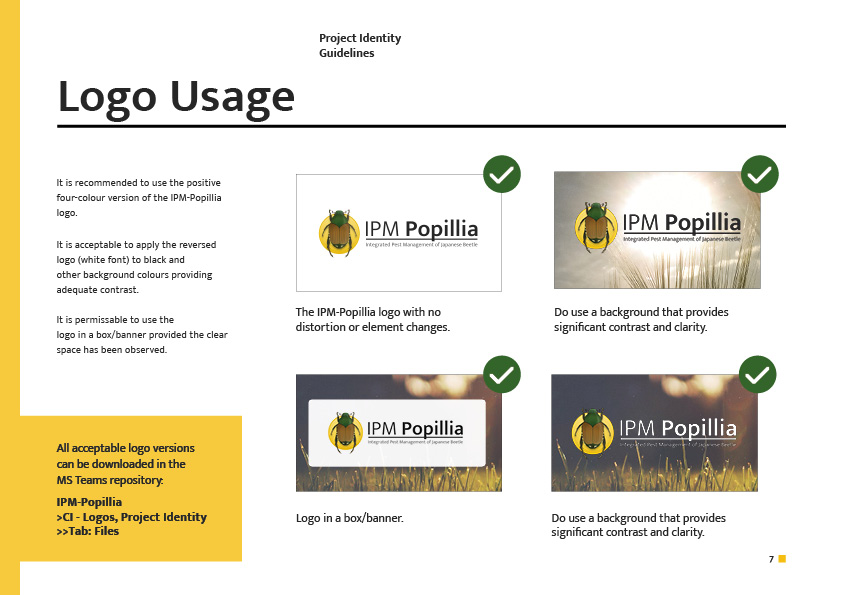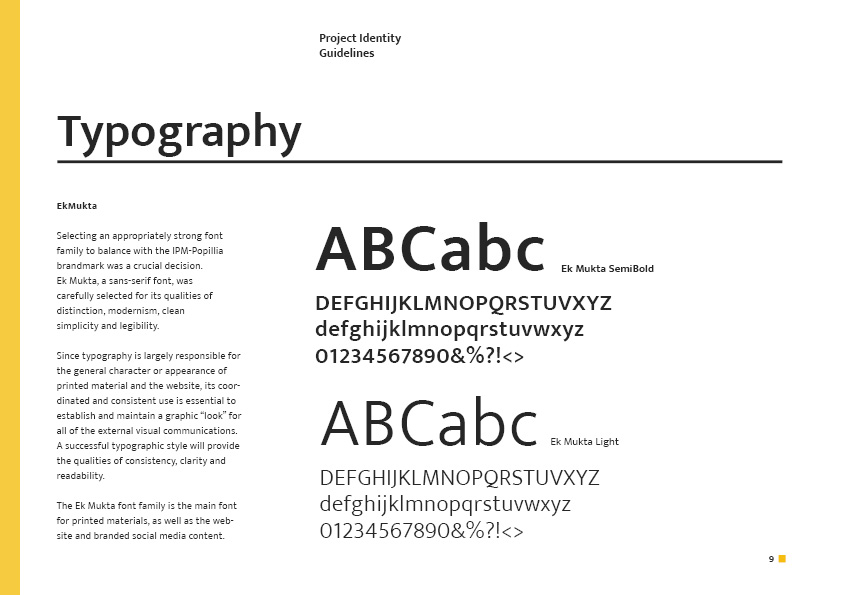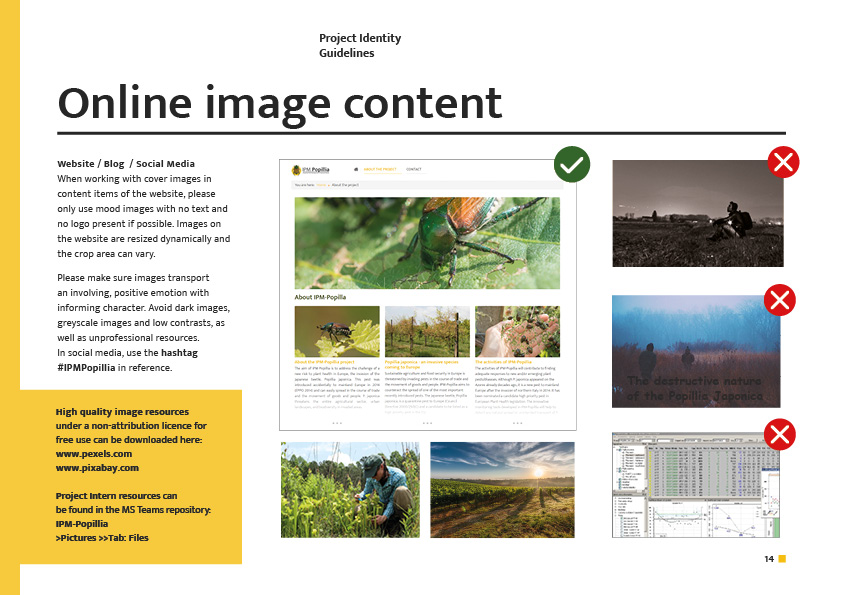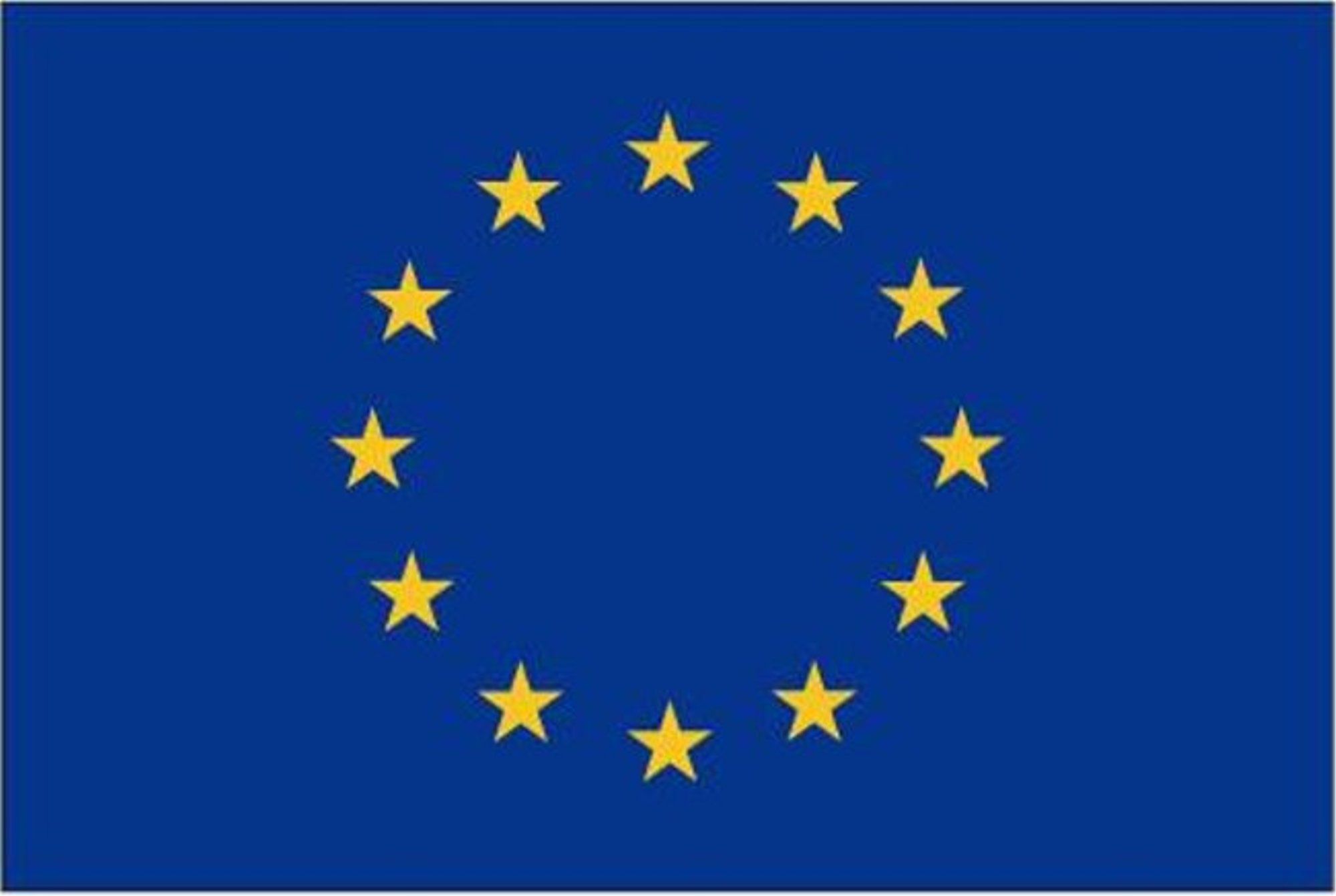
This project has received funding
from the European Union's Horizon 2020
research and innovation program
under grant agreement No 861852
> Learn more about Citizen Science
in Horizon Europe Partnerships
Citizen Science Tools for Invasive Species Monitoring & Pest Management
Recently, EFSA and the JCR of the European commission have nominated P. japonica as a candidate high priority pest in the new EU Plant health Law. Against this background, it is paramount to develop measures that help confine the Beetle's spread and prevent the build-up of high population densities that cause dramatic economic loss to agricultural crops and increase migration pressure of the Japanese beetles. The project IPM-Popillia develops these measures. It involves teams working in the core of the recent outbreak area, conducting fit-for-purpose practical research in a European environment that can be applied immediately as short-term containment measures. In the longer term, IPM Popillia provides tools and advice on managing the pest on a larger, European continental scale and how to better be prepared for similar pest invasions in the future. Identifying the Japanese beetles' entry pathways and spread IPM-Popillia aims to make invasive species monitoring faster and provide an optimal surveillance strategy while involving the public via Citizen Science.
Other outcomes of this Horizon 2020 funded project are supporting EU policy on managing high priority pests in general and raising public awareness of emerging new threats to our food safety. The Methods to achieve these objectives include monitoring trap development, phylogeographic studies, and a Citizen Science App approach. As an active partner in the Horizon 2020 project, the latter is where SPOTTERON as a platform for Citizen Science technologies and interactive applications contributes to the project's goals.
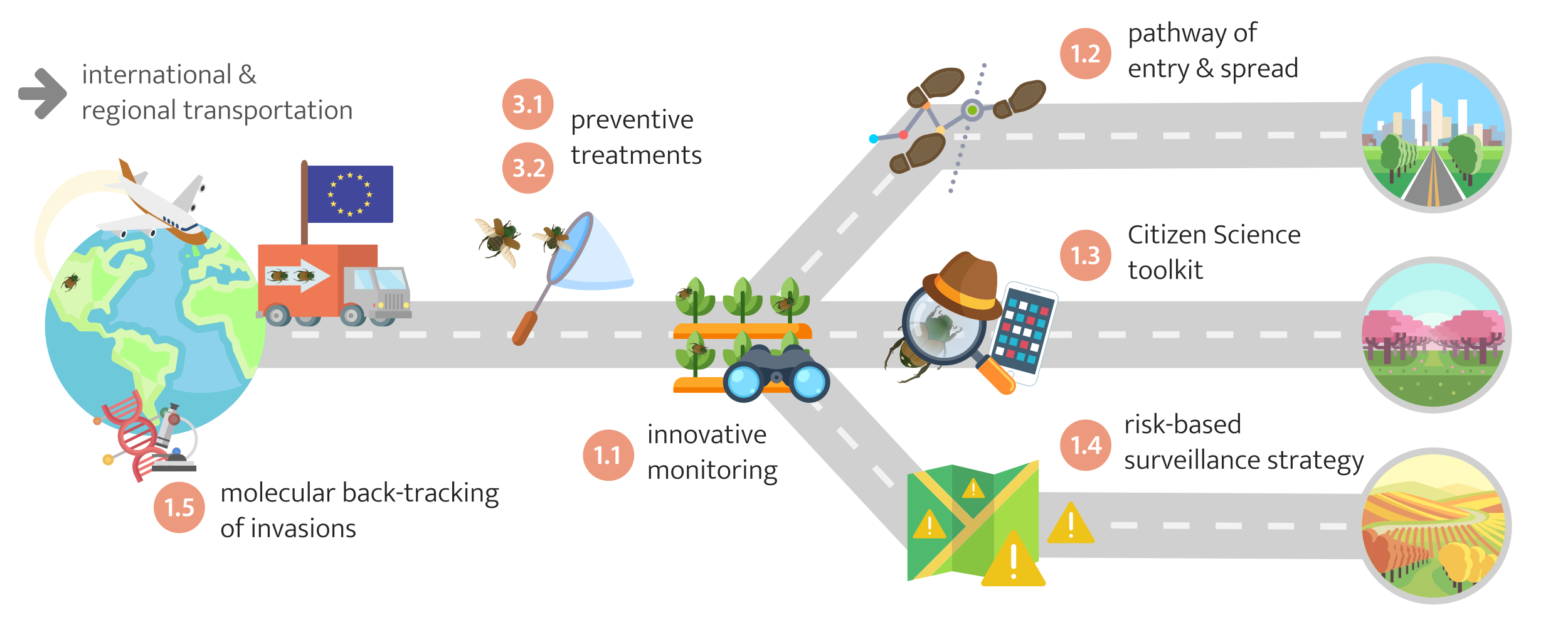
Our Contributions in the IPM Popillia Horizon 2020 Project:
Development of the Citizen Science App and Toolkit
Finding the Beetle can be difficult for a small group of researchers. To open the IPM Popillia project to the public and offer European citizens the possibility of contributing data, we lead the task of designing and developing an IPM Popillia Citizen Science App for public participation and an advanced toolkit. The invasive species monitoring App invites farmers, gardeners, and other stakeholders to look out for the Japanese Beetle in their area. A strength of Citizen Science lies within both monitoring on a broader scale and including the target groups in both data collection and interaction. The Citizen Science toolkit for the IPM-Popillia project utilizes Smartphone Apps for Android and IOS and a Web-Application for the browser on the project's website based on the SPOTTERON Citizen Science Framework.
Data Acquisition is not everything - data needs also to be manageable. Along with the Apps, we provide an administration interface with editing capability, data filters, and data export options for data maintenance for the project partners. In addition, the platform's API can be used to automatically synchronize the Citizen Science generated data by parameters with other databases of consortium members and research institutions.
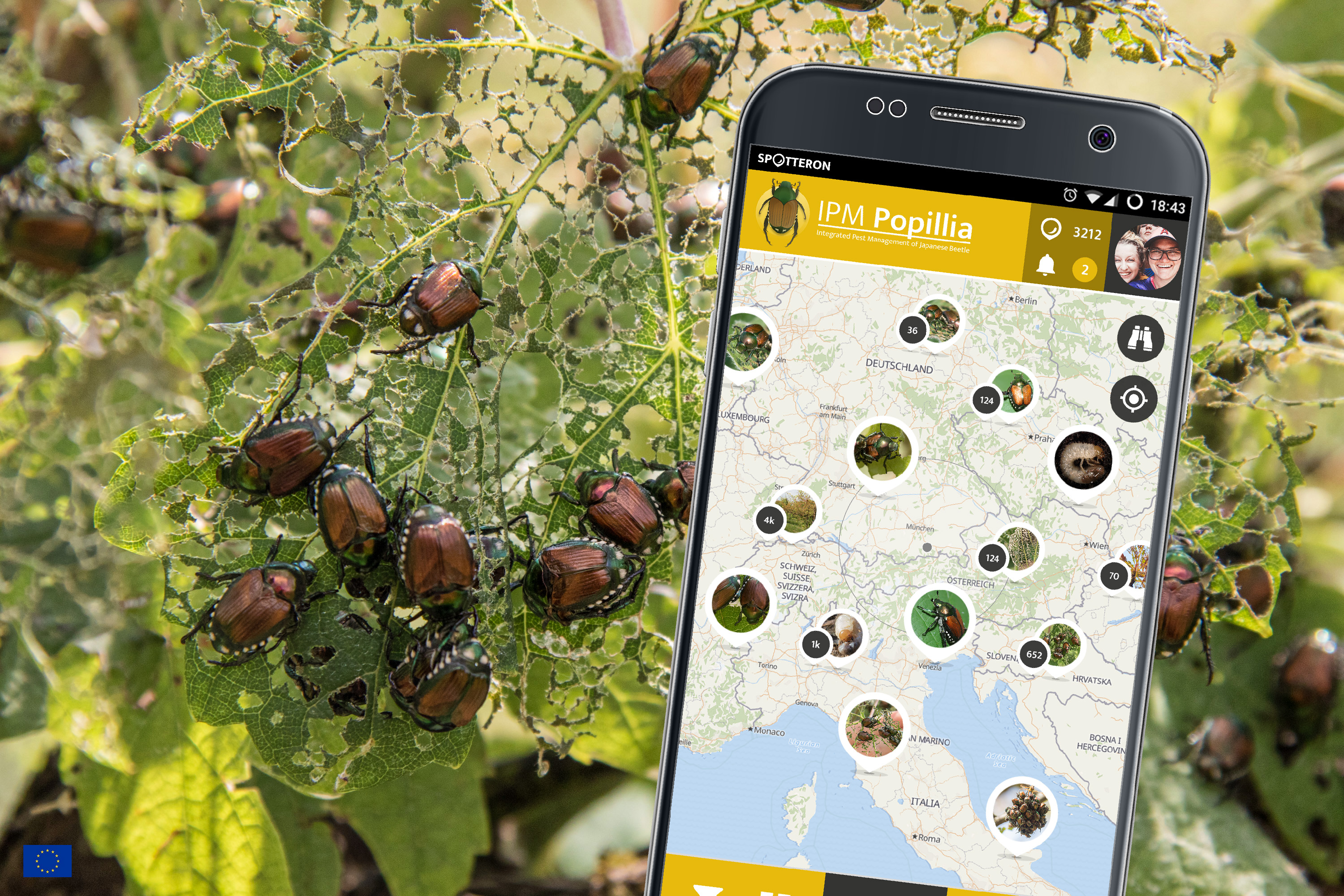
As it is a key focus on the SPOTTERON Citizen Science platform, the IPM Popillia App concentrates on community building between citizens and project scientists. By implementing modern App features for communication, the App's reach, activity level, and data contribution will benefit from such interactivity and improve data quality by enabling feedback loops. Other features will include e-learning areas, which will inform users about food safety, invasive species and the impact of Popillia japonica and other invasive pests on our daily lives.
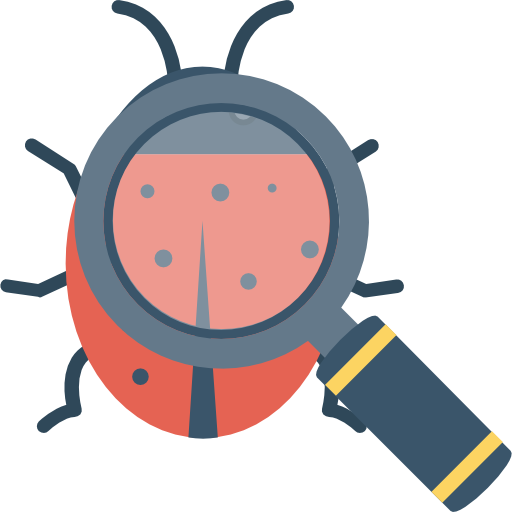
Artificial Intelligence in Citizen Science Apps

App Updates & Maintainance
Project Identity Design & Dissemination Activities
Reaching out to the public means making a good first impression. Our responsibilities in IPM Popillia include designing and developing the project's identity, like the project's logo and typography. The 'Project Identity Guidelines' shall support all partners to improve the efficiency of their project work and the quality of the project's deliverables, presentations and communication. These guidelines aim to improve the effectiveness of the project's communications in today's crowded environment. The IPM-Popillia project will enjoy greater awareness and recognition through consistent use of these guidelines.
Every Citizen Science research project needs a homepage for accessible information, outcomes and publications - a Horizon 2020 project is not different. One task in the Work-Package "Developing sustainable Japanese beetle management in Europe" is providing a modern website that works well on mobile and offers easy administration to the project's team. A content management system (CMS) based website as a hub for the project, and the setup of the online representations in social media information distribution. The IPM-Popillia website allows ongoing content contributions in a blog section by all partners, which create a stream of background information, project activities, and e-learning content to increase public outreach. Further, our team holds online courses for the partners on how to write for an online audience to support the goal. Additionally, a project manual for Citizen Scientists and target groups, vade-mecum/journal, promotion material, and other visual content for online and offline use are prepared & designed by our team.

We are happy to offer our know-how. You are interested in our services within research projects, applying for Horizon Europe grants?
Read more about Citizen Science Cooperations for Horizon Europe


